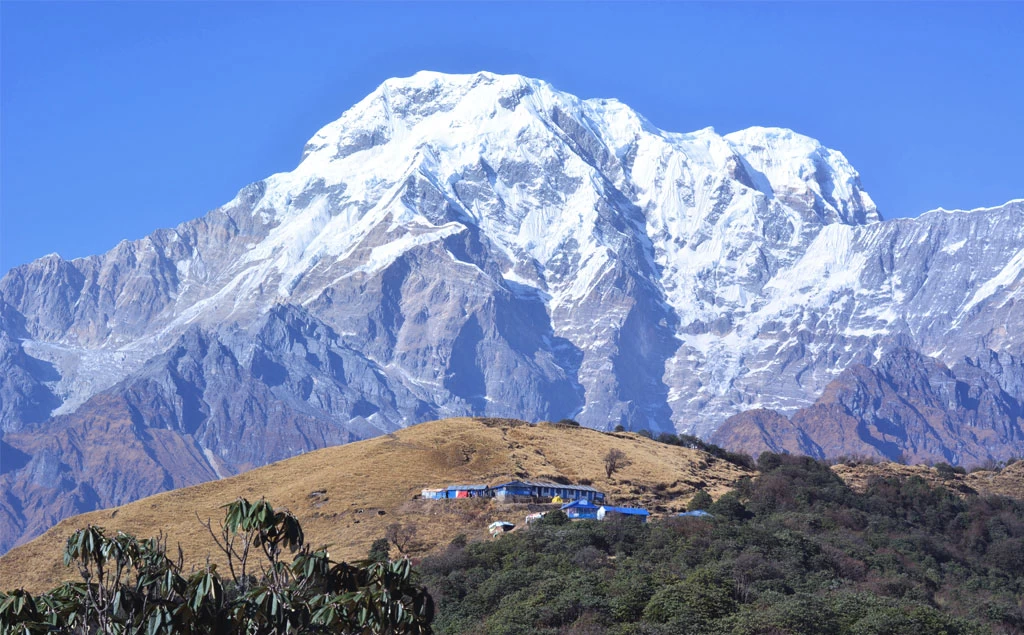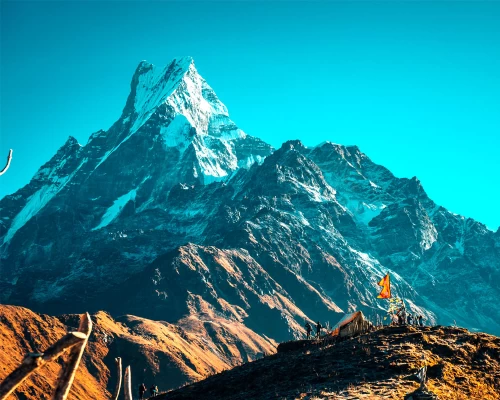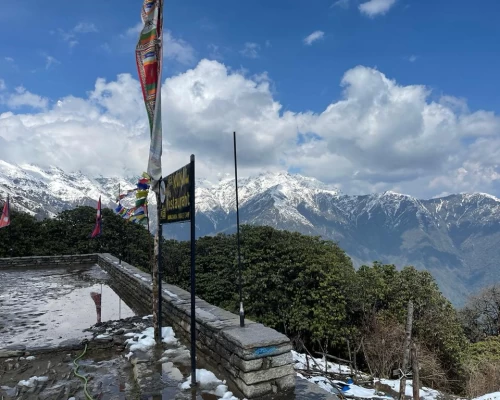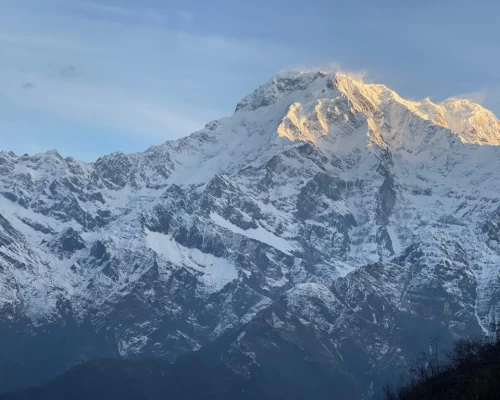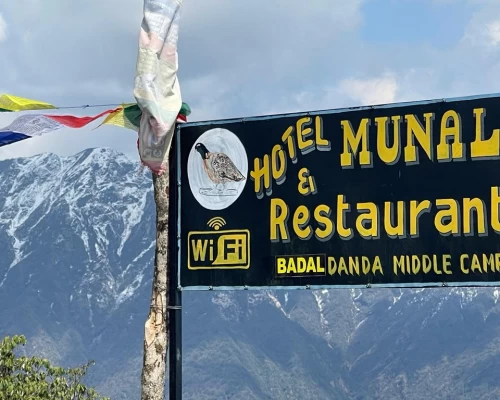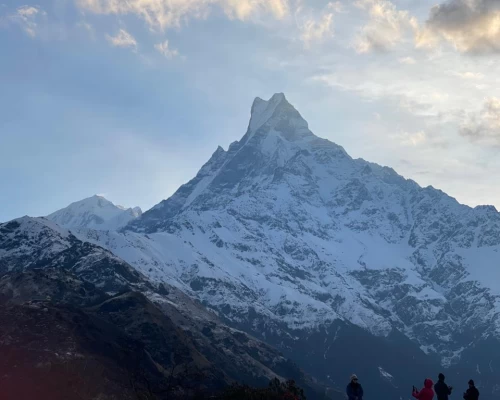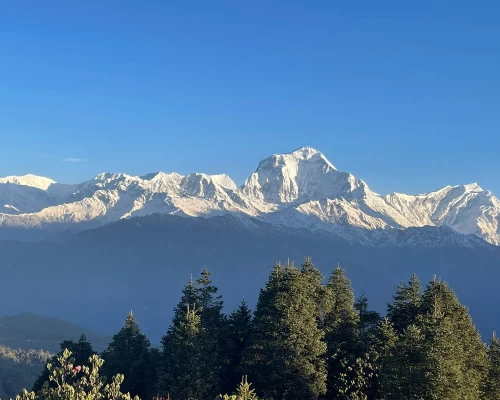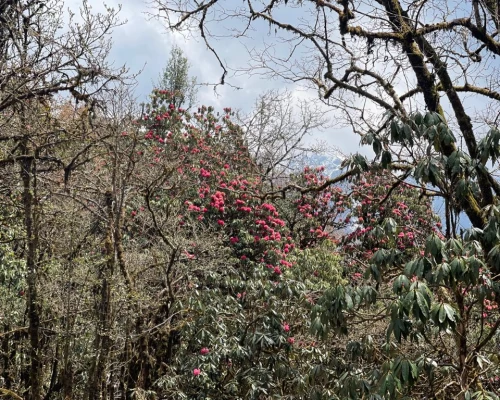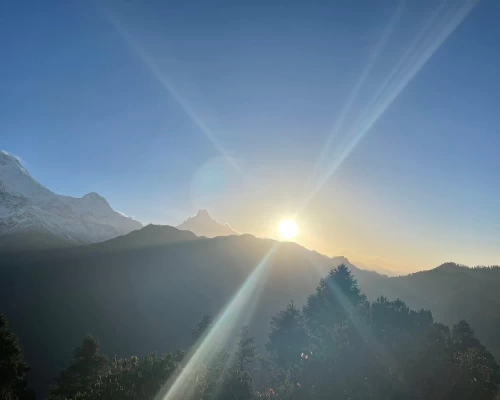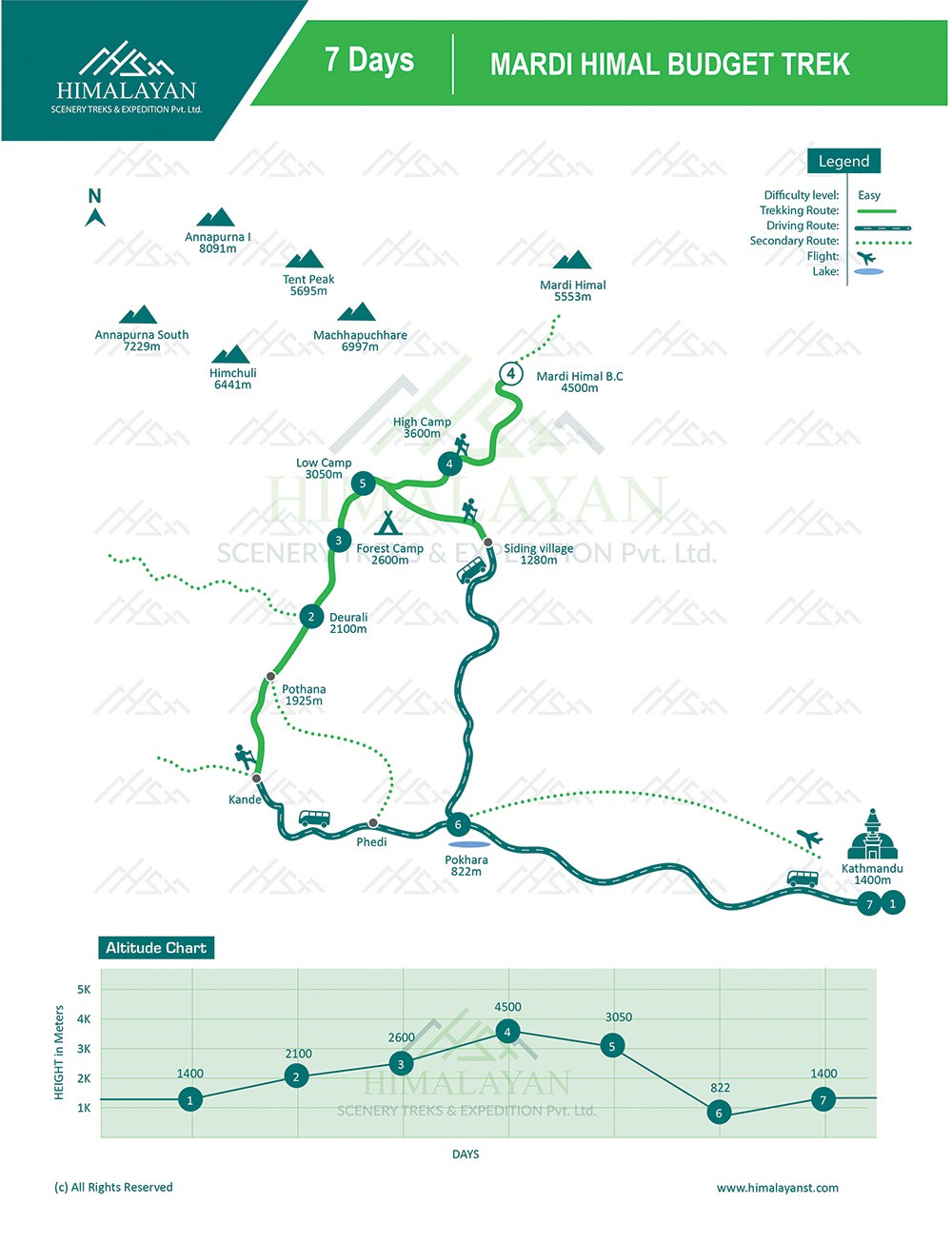Mardi Himal Trek is a newly explored trip in Nepal, offering amazing views of majestic peaks like Mardi Himal, Annapurna I, and Dhaulagiri. This 7-day trek is exciting but also suitable for first-time trekkers too. We begin our journey by stepping into the lush green wilderness, a thick forest full of colorful rhododendron, birch, oak, maple, hemlock, and daphnia. These beautiful forests provide a charming setting for a trek, making you feel closer to nature.
The journey for the Mardi Himal Trek primarily commences at Kande, located 27 kilometers to the north of the city of Pokhara. The trekking path winds its way from Kande to various waypoints including Australian Camp, Pothana, Deurali, Forest Camp, Low Camp, Middle Camp (also known as Badal Danda), and High Camp, concluding at the Mardi Himal Base Camp. The journey then doubles back, diverging at Low Camp towards Siding Village. The overall length of the Mardi Himal Trek is 41 kilometers, which translates to approximately 25 miles.
One of the prominent stopovers on the Mardi Himal Budget Trek is the Forest Camp. It's a place where trekkers rest and camp in the midst of a serene, dense forest. The Forest Camp allows you to immerse in the tranquil ambiance of the forest, watch the local wildlife, and listen to the whispering breeze. It's an essential part of the trek experience, offering a unique opportunity to connect deeply with the surrounding natural environment.
The trek route also includes the High Camp and the Low Camp. High Camp is the highest point of the trek, offering breathtaking panoramic views of the snowy peaks. Low Camp is the base camp where you rest before and after ascending to the High Camp. These camps act as stepping stones, assisting trekkers to gradually adapt to the increasing altitudes.
Another distinctive feature of this trek is the presence of two beautiful rivers - Mardi Khola and Modi Khola. Walking along the banks of these rivers, crossing over bridges, and listening to the peaceful sounds of the flowing water is a truly soothing experience. These rivers add a vibrant touch to the natural beauty of the trekking trail.
Best Time for Mardi Himal Budget Trek
The Mardi Himal Budget Trek is a joy anytime, but some periods are particularly special. In general, autumn and spring are considered the best times to embark on this adventure. Autumn spans from September to December and spring from March to June. These seasons offer clear skies and comfortable temperatures, enhancing the trekking experience.
Autumn brings stable weather, less rain, and clean air. This is when the mountains come alive with sparkling clarity. Plus, the forests are colored with shades of autumn, offering a magical view.
Spring is another favorite among trekkers. The weather is pleasant, not too cold nor too hot. More importantly, spring is when the rhododendron, the national flower of Nepal, blossoms, turning the forests into a riot of colors. This makes your trek not just a physical journey, but also a delightful sensory experience.
However, if you are a winter enthusiast, December to February could be your ideal time. The trek gets challenging due to the snow, but the landscape turns into a winter wonderland. It's important to note that winter trekking requires extra preparation for the cold.
Lastly, the months of June to August, the monsoon season, is typically avoided by trekkers due to heavy rainfall. The trails can be slippery and views are obscured by clouds. However, for those seeking solitude and lush green landscapes, this could be a unique time to trek.
Sightseeing during Mardi Himal Budget Trek
The Mardi Himal Trek is a trekker's paradise, rich in natural wonders and stunning landscapes. Starting from Pokhara, the gateway to many treks in the Annapurna region, you're introduced to a lively city with a beautiful lake, often graced by the paragliders in the sky.
As you proceed, you'll find yourself immersed in the lush, thick forests full of rhododendron, birch, oak, maple, hemlock, and daphnia. These forests are a feast for the eyes and home to several species of birds and animals. It's a great spot for nature enthusiasts.
Along the trek, with traditional houses, terraced fields, and friendly locals, this village gives you a glimpse into rural Nepalese life. Take some time here to explore and interact with the locals for a unique cultural experience.
Upon reaching the High Camp, you're greeted by the majestic views of Mardi Himal, Annapurna I, and Dhaulagiri. This is the best part for mountain lovers. The panoramic vista of the snow-capped peaks against the bright blue sky is absolutely breathtaking.
The journey alongside the Mardi Khola and Modi Khola rivers adds a serene touch to your trek. The sound of the flowing water, the occasional sight of a waterfall, and the cool river breeze make for a soothing experience.
Mardi Himal Budget Trek: Is It Right for Me?
Deciding whether this short trek is right for you depends on several factors. If you are someone who enjoys nature and is excited by the prospect of walking through lush forests, quaint villages, and beautiful rivers, this trek might be an excellent fit. The majestic views of peaks like Mardi Himal, Annapurna I, and Dhaulagiri are certainly a highlight for mountain lovers.
In terms of physical fitness, this moderate-level trek requires a fair amount of walking, typically around 5-7 hours each day. So, you should be in good health and reasonably fit. If you're new to trekking, don't worry, as it's suitable for first-time trekkers too, given you prepare adequately beforehand.
The trek also gives you a chance to experience Nepalese culture closely. If you're someone who appreciates learning about new cultures and interacting with locals, you'll find this aspect fulfilling. Plus, staying in teahouses and eating local cuisine adds to the authenticity of the experience.
However, if luxury travel is your preference, you might find the basic accommodation and facilities during the trek a bit challenging. Also, if you're not a fan of walking or you're uncomfortable with altitude, the Mardi Himal Budget Trekking might be a tough endeavor.
